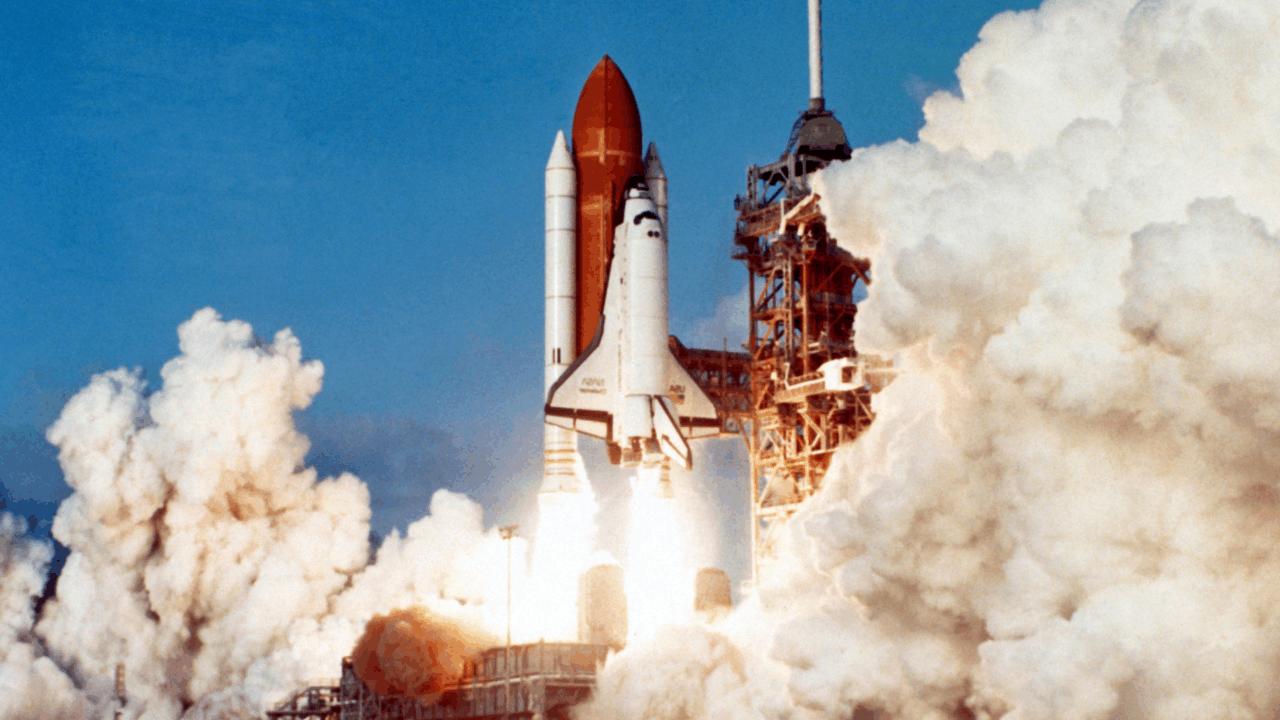Im übrigen erholt sich Gold gerade, nur Sabina möchte keiner haben. Und das bei den Aussichten....Nachwievor kein long invest, wie schon seit vielen Jahren.
Top-News
Neuester,
zuletzt geles. Beitrag
Antworten | Hot-Stocks-Forum Übersicht Zurück
Weiter
Zurück
Weiter
... 88 89 90 92 93 94 ...
Antworten | Hot-Stocks-Forum Übersicht
... 88 89 90 92 93 94 ...
Sabina Silver wird zu Sabina Gold and Silver
Beiträge:
2.737
Zugriffe: 949.112 / Heute: 127
Zugriffe: 949.112 / Heute: 127
|
Werbung
Entdecke die beliebtesten ETFs von Xtrackers
Xtrackers LevDAX Daily Swap UCITS ETF 1C
Perf. 12M: +36,03%
Xtrackers MSCI Pakistan Swap UCITS ETF 1C
Perf. 12M: +34,47%
Xtrackers MSCI Europe Commun. Services Scr. UCITS ETF 1C
Perf. 12M: +29,45%
Xtrackers MSCI Europe Financials Screened UCITS ETF 1C
Perf. 12M: +29,18%
Xtrackers MSCI Africa Top 50 Swap UCITS ETF 1C
Perf. 12M: +26,28%
Wieder ein herber schlag für die longies. Sieht so aus als wirds noch billiger, sprich unter 1,40 Euros, wie beim letzten mal. Werden wieder schnelle Prozente, wie schon seit Jahren. Mal sehn wann ich mein körbchen aufstelle, allerdings nur kurzfristig, kommt immer wieder runter. Weiiterhin viele grüsse an die langfristigen. An ihrer stelle würde ich langsam an der Anlegestrategie zweifeln. Alles geht durch die
Decke....megalach.
Meine Meinung.
Decke....megalach.
Meine Meinung.
Gerne würde ich weiterhin die Meinung unserer Experten hören. Vor wochen waren sie ja noch voll euphorie.
Bin gespannt wo Gold, als auch Sabina notiert wenn ein Impfstoff in sichtweite ist. Da wirds den ein oder anderen Schlag geben.
Alles andere als gut für die seit Jahren langfristigen.
Bin gespannt wo Gold, als auch Sabina notiert wenn ein Impfstoff in sichtweite ist. Da wirds den ein oder anderen Schlag geben.
Alles andere als gut für die seit Jahren langfristigen.
Bin mit einer kurzfristigen Position dabei, erwarte schnelle 10% die nächsten Wochen. Denke aber dennoch das das letzte tief nochmal fällt. Aber den Tiefstpunkt erreicht man fast nie. Man will ja dabei sein wenn der Zug losfährt.... Lach
Langfristig erst bei 1 bis 1,20 Euro und wenn man genaueres weis über die Coronalage, sprich Impfstoff.
Langfristig erst bei 1 bis 1,20 Euro und wenn man genaueres weis über die Coronalage, sprich Impfstoff.
wenn Gold ins Plus dreht, sind die 10% schnell da.
Viel Erfolg
Viel Erfolg
Eignet sich kaum mehr zum traden. Man darf gespannt sein was noch passieren muss das die Aktie steigt. Reagiert fast nicht mehr auf steigenden Goldpreis. Kein interesse, und das bei den Aussichten.... Lach.
Ich denke ich werde meine kurzfristige Position diese Woche auflösen, minimalstes plus bei steigendem Goldpreis . Mal sehn. Die Aktie ist so tot wie nichts anderes.
Obwohl ja 4 US-Dollar erwartet werden zum Jahresende. Über 30% mit Ansage. Uiuiui... lach. Gruss an die langfristigen die in diesem Jahr die nächste Nullnummer einfahren.
Meine Meinung.
Obwohl ja 4 US-Dollar erwartet werden zum Jahresende. Über 30% mit Ansage. Uiuiui... lach. Gruss an die langfristigen die in diesem Jahr die nächste Nullnummer einfahren.
Meine Meinung.
Ich bin raus, minimales plus, das kann man nicht mehr mit ansehen. Melde mich beim nächsten trade. Beim dem Goldpreis müsste die Aktie durch die Decke gehen, ist aber seit Jahren nicht so. Die langfristigen mal lieber in apple und co investiert. Diese Kurssteigerungen wird man hier lange nicht sehen. Stichwort 2,50 Euro, in 2018....Lach.
Gerne Expertenmeinungen. Aber die halten sich seit Jahren zurück, sind wohl in der Realität angekommen. Mal sehn wo sabina notiert wenn Gold einbrechen sollte...
Für mich immer wieder sehr lustig hier, wenn ich zurückblättere. Seit sehr vielen jahren auf der richtigen Seite, und sollte damals schon das Forum verlassen..
Wird schon...man muss nur warten können... lach
Meine Meinung
Gerne Expertenmeinungen. Aber die halten sich seit Jahren zurück, sind wohl in der Realität angekommen. Mal sehn wo sabina notiert wenn Gold einbrechen sollte...
Für mich immer wieder sehr lustig hier, wenn ich zurückblättere. Seit sehr vielen jahren auf der richtigen Seite, und sollte damals schon das Forum verlassen..
Wird schon...man muss nur warten können... lach
Meine Meinung

Anzeige: Insider kaufen weiter!
Warum Forge Resources immer stärker in den Fokus rückt
With the gold price having closed above $1800 over the past few quarters, M&A activity has been quiet despite miners generating billions of free cash flow. After a period of impairments, write-downs, and value destruction following the M&A frenzy of the last gold price boom that ended in 2011, global miners have shifted away from growth strategies to margin preservation.
During the last boom, gold companies sought to bolster reserves with annual acquisitions that peaked at US$38 billion in 2011. The average price paid per gold reserve ounce during this peak period was often more than 300 percent higher than deals executed a decade earlier.
In recent years, shareholders and activist investors have become increasingly vocal about value destruction resulting from aggressive M&A strategies. Reserve replacement remains the key problem for the industry, but management teams have remained cautious about launching acquisitions to replenish depleted reserves.
In 2019, sector deals ramped up considerably after the gold price broke out of a nearly 7-year base above $1400. The deal total amounted to about $26 billion, according to data compiled by Bloomberg. But 2020 has been decidedly lower thus far, amounting to only around $9.8 billion either completed, or agreed upon heading into Q4.
Since the global lockdowns began in March, most senior gold producers have been focused on becoming health and safety compliant and adopting remote working strategies. There have also been challenges conducting due diligence with the ongoing travel restrictions, making it difficult for them to execute M&A this year.
During the last boom, gold companies sought to bolster reserves with annual acquisitions that peaked at US$38 billion in 2011. The average price paid per gold reserve ounce during this peak period was often more than 300 percent higher than deals executed a decade earlier.
In recent years, shareholders and activist investors have become increasingly vocal about value destruction resulting from aggressive M&A strategies. Reserve replacement remains the key problem for the industry, but management teams have remained cautious about launching acquisitions to replenish depleted reserves.
In 2019, sector deals ramped up considerably after the gold price broke out of a nearly 7-year base above $1400. The deal total amounted to about $26 billion, according to data compiled by Bloomberg. But 2020 has been decidedly lower thus far, amounting to only around $9.8 billion either completed, or agreed upon heading into Q4.
Since the global lockdowns began in March, most senior gold producers have been focused on becoming health and safety compliant and adopting remote working strategies. There have also been challenges conducting due diligence with the ongoing travel restrictions, making it difficult for them to execute M&A this year.
Text zur Anzeige gekürzt. Gesamten Beitrag anzeigen »
Dann können deine, seit Jahren erwarteten, 2,50 Euro ja kommen.... Lach. Wird schon.
www.stockwatch.com/News/...973846&symbol=SBB®ion=C
es geht mit großen Schritten in Richtung Show Down... ;-)
es geht mit großen Schritten in Richtung Show Down... ;-)
Bei den Ergebnissen sollte man eigentlich kaufen. Aber irgendwie interessiert sich momentan keiner ernsthaft für die Aktie. Wie kann das bloß sein...
Wenn einer unserer hauptexperten zum einstieg bläst, dann muss man ja fast investiert sein. Stichwort 2,50 Euro, im Jahr 2018....die
Aktie reagiert null auf die news, aber ein minimales invest ists alle mal wert. Schnelle prozente, dann wieder raus.
Aktie reagiert null auf die news, aber ein minimales invest ists alle mal wert. Schnelle prozente, dann wieder raus.
Das mit dem show down haben wohl noch wenige Anleger mitbekommen, sonst stünde die Aktie wesentlich höher...lach. Kein Kaufdruck. Wie seit sehr vielen Jahren. Die langfristigen werden sich wohl weiter gedulden müssen, aber das ist ja nichts neues.
Meine Meinung.
Meine Meinung.
Showdown.. sieht wohl anders aus. Lach. Solltest mal jeden Anleger anschreiben das die es auch mitbekommen. ...keinen interessiert die Aktie ernsthaft, seit einem Jahrzehnt schon...wird schon.
Meine meinung.
Meine meinung.
Soll ja laut Presse schon ende des Jahres (hoffentlich) evlt einen Impfstoff geben. Was das für die Märkte, als auch Gold bedeuted kann sich jeder ausmalen. Da wirds für unsere langfristigen noch die ein oder andere klatsche geben.
Was sagen unsere Experten, jetzt schon kurzfristig einsteigen? Bevor der shut down kommt. Sorry, show down muss es ja heissen. Lach.
Vielleicht sollten die langfristigen lieber in Apple umschichten, dort konnte man sehr viel Geld verdienen, während man hier auf etwas wartet was vielleicht nie passieren wird. Manche hoffen und warten schon seit fast einem Jahrzehnt...wird schon.
Nur meine Meinung.
Vielleicht sollten die langfristigen lieber in Apple umschichten, dort konnte man sehr viel Geld verdienen, während man hier auf etwas wartet was vielleicht nie passieren wird. Manche hoffen und warten schon seit fast einem Jahrzehnt...wird schon.
Nur meine Meinung.
Ich denke ich werde diese Tage eine Position wagen. Goldpreis dürfte anziehen. Erstes Ziel Jahresende. Dann wieder raus. Falls sie nicht mit dem Goldpreis geht schon vorher.
Showdown soll ja auch noch kommen...lach
Meine Meinung
Showdown soll ja auch noch kommen...lach
Meine Meinung
Derjenige der heute in Deutschland geschmissen hat, hat wohl nichts von dem bevorstehenden show down mitbekommen...lach.
@tilcox
Mit den 4 C$ die du vor längerer Zeit vermutet hast wirds wohl nichts mehr in diesem Jahr.. Da hast du einmal was zur Aktie beigetragen und nicht mich angegangen, und schon gings in die Hose...
die erwarteten 2,5 Euro auch in sehr weiter ferne. Das wenn mir jemand vor Jahren gesagt hätte... lach
Wird schon, ist ja nicht so das man nicht schon Jahre wartet, während alles andere durch die Decke geht....
Meine meinung
@tilcox
Mit den 4 C$ die du vor längerer Zeit vermutet hast wirds wohl nichts mehr in diesem Jahr.. Da hast du einmal was zur Aktie beigetragen und nicht mich angegangen, und schon gings in die Hose...
die erwarteten 2,5 Euro auch in sehr weiter ferne. Das wenn mir jemand vor Jahren gesagt hätte... lach
Wird schon, ist ja nicht so das man nicht schon Jahre wartet, während alles andere durch die Decke geht....
Meine meinung
überhaupt klingt das alles sehr positiv, es scheint gut vorwärts zu gehen:
www.sabinagoldsilver.com/news/...construction-accomplishments
www.sabinagoldsilver.com/news/...construction-accomplishments
Schon krass was da am Freitag kurz vor Handelsschluss in Kanada gehandelt wurde, fast 20 Mio Aktien.
Habt ihr ne Idee? hab bisher kein News finden können.
Habt ihr ne Idee? hab bisher kein News finden können.
"wow79"
Das liegt am Blocktrade an der GDJX, seid geraumer Zeit ist Sabinchen dort mitaufgenommen.
Was ich persönlich sehr positiv sehe da man einem breiteren Publikum nun gezeigt wird und mehr Interesse an dem tollen Projekt generiert.
Das liegt am Blocktrade an der GDJX, seid geraumer Zeit ist Sabinchen dort mitaufgenommen.
Was ich persönlich sehr positiv sehe da man einem breiteren Publikum nun gezeigt wird und mehr Interesse an dem tollen Projekt generiert.
Es gibt keine neuen Beiträge.
Ich:
|
Neueste Beiträge aus dem Sabina Gold & Silver Forum
| Wertung | Antworten | Thema | Verfasser | letzter Verfasser | letzter Beitrag | |
| 15 | 2.736 | Sabina Silver wird zu Sabina Gold and Silver | squalid | aktienmädel | 25.04.23 08:08 | |
| 42 | Das seriöse Sabina Gold Forum | tilcox | tilcox | 22.11.22 20:27 | ||
| 4 | Sotkamo vs Sabina | Steinigo | NewBarbossa | 15.07.22 17:12 | ||
| 1 | Sabina Silver | tartufi | NewBarbossa | 15.07.22 16:59 | ||
| 10 | Erstes Kursziel 1,38 Dollar | KohleKies | fishbet | 25.04.21 01:38 |



